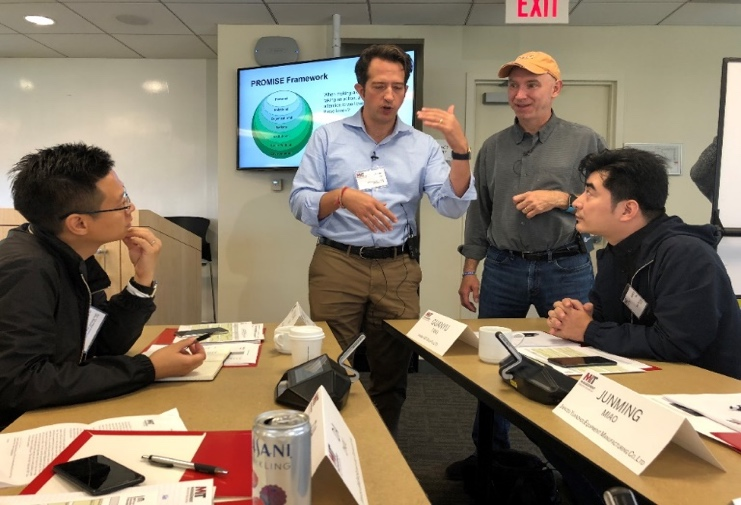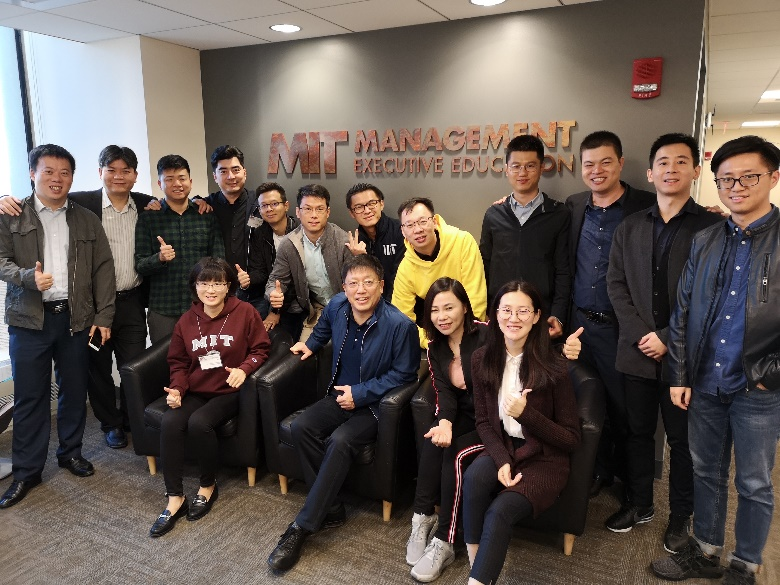| Position: Home > News Center > Company News |
| Wuxi Young Entrepreneurs Trained in MIT (October 2018) |
| Publish Time:2023-08-01 |
|
Commissioned by the Wuxi Talent Office, JAISTC arranged two separate training sessions in late August and early October 2018 for young entrepreneurs from Wuxi. The domestic training took place at the Business School of Nanjing University, while the overseas training was conducted at the MIT Sloan School of Management and the Haas School of Business at the University of California, Berkeley, in the United States. Apart from classroom lectures, the participants also visited Jiangsu Industrial Technology Research Institute(Jitri) and the headquarters of Suning in China. During the overseas training, they visited the headquarters of Hewlett-Packard and Apple in Silicon Valley, gaining valuable insights through on-site learning experiences. Through this training, the participants developed a deeper understanding of the importance of openness, innovative practices, and sustainable development in the new era, as well as how green development can enhance international competitiveness. 1.Training Schedule and Key Topics 1.1 Domestic Training Schedule and Highlights The 6-day domestic training took place in late August 2018 at Nanjing University's Gulou campus. The lectures primarily focused on the current domestic and international economic situation, trends in high-tech development, and human resources management. Additionally, the participants visited JITRI and the headquarters of Suning Group.
In class of MIT Sloan School 1.2 Overseas Training Schedule and Highlights The overseas training was conducted at MIT Sloan School of Management in Boston, on the East Coast of the United States, and at the Haas School of Business at UC Berkeley, in San Francisco, on the West Coast. The participants also had on-site learning experiences at the headquarters of Hewlett-Packard. At MIT Sloan School of Management, the theme of the training is focused on "Sustainable Business Development Strategy." The most memorable session was the "fish banks" simulation, which used MIT's software to allow students to simulate fishing in the ocean, providing practical insights into the importance of sustainable development. At the Haas School of Business in. UC Berkeley, the participants attended lectures on various topics, including "The Rise, Development, and Innovative Thinking of Silicon Valley" by Professor Martin Kenney, "Innovative Thinking and Management Case Analysis: Marketing Models and Marketing Team Management" by Professor David Robison, "The Social Significance and Trends of Computer Technology Development" by Professor Joshua Hug, and "Market Expansion in the High-Tech Sector" by Senior Lecturer Andrew Issacs. The lecture that left a lasting impression was "The Rise, Development, and Innovative Thinking of Silicon Valley." Along with Silicon Valley's success, various high-tech clusters have sprung up like mushrooms in the United States and other parts of the world, such as the Route 128 area in Massachusetts, Austin in Texas, and the "Research Triangle" in North Carolina. UCLA also refers to its nearby area, close to Santa Monica Beach, as "Silicon Beach." 2. Main harvest and Experiences 2.1 Whether it's the development of a country, a region, or a company, sustainability should be a top priority, which involves environmental protection, green practices, and resource recycling. Companies should not only produce environmentally friendly products but also ensure that their production processes, after-sales services, and disposal methods are eco-friendly and have minimal environmental impact. Using renewable energy sources like solar, wind, and biomass in industrial processes and implementing water recycling are important steps toward sustainability. Additionally, prioritizing human-centered approaches and treating employees well are essential for a company's sustainable development. 2.2 One must adopt a comprehensive view of issues, considering not only the immediate interests of a company or industry but also the global perspective and future trends. Strategic implementation should be flexible enough to adapt to external changes. For instance, during our visit to Hewlett-Packard, we learned that its 80-year success has been maintained through continuous self-adjustment and iterative updates. 2.3 While competition exists among peers, collaboration is equally important. The "Fish banks" simulation at MIT emphasized the significance of effective communication. In reality, it is essential to leverage industry associations' self-regulation and work collectively to address common challenges rather than dealing with them individually. 2.4 Continuous innovation is crucial. In the current world transitioning from the Internet age to the era of artificial intelligence, it is essential to keep up with the times and embrace big data, cloud computing, intelligent manufacturing, and AI to achieve industrial transformation and upgrading. Stagnation or minor progress can lead to regression. Professor Martin Kenney provided a comparison between the top ten companies with the highest global market value in 2002 and 2018, highlighting how only Microsoft remained on the list in 2018, and even its ranking had dropped from the first to the third position. Once-prominent Internet portal companies like Yahoo and Ebay had faded away. These are the main points and experiences gathered from the training, offering valuable insights for young entrepreneurs in their pursuit of sustainable development and success in today's rapidly changing business landscape.
Group photo in MIT Sloan School |

